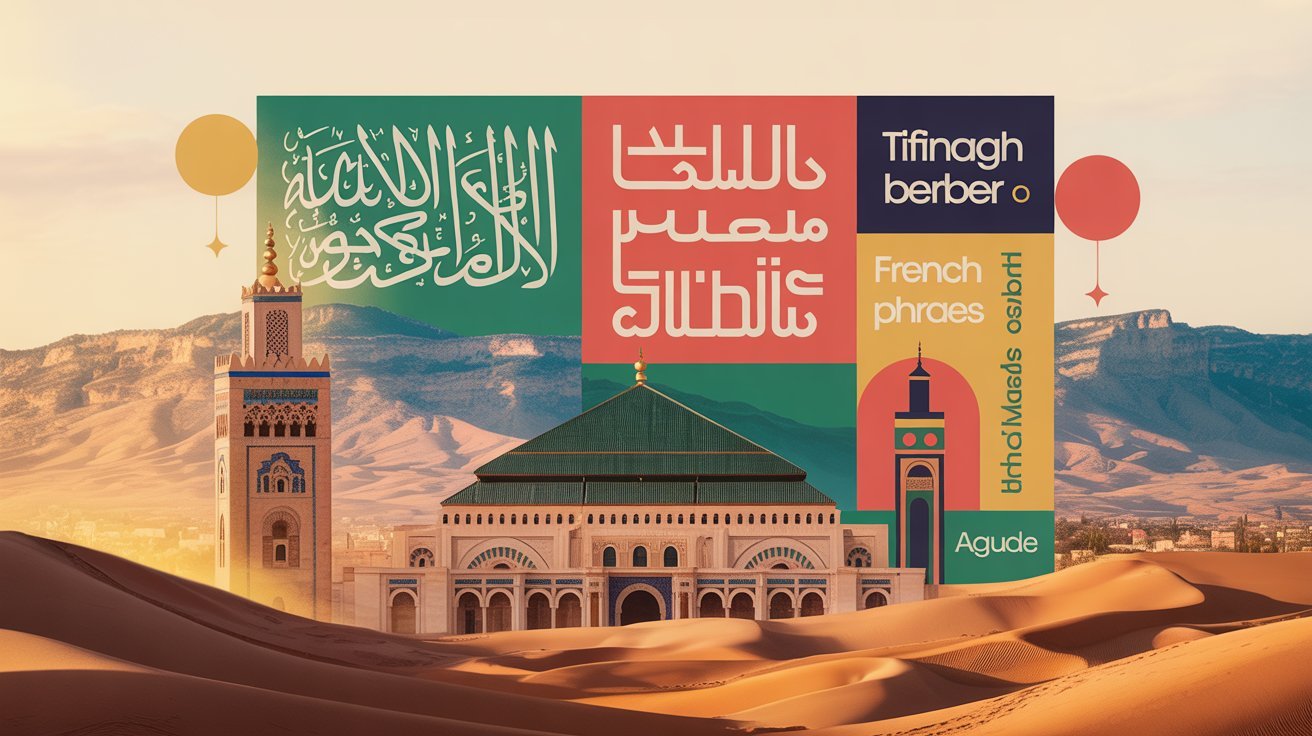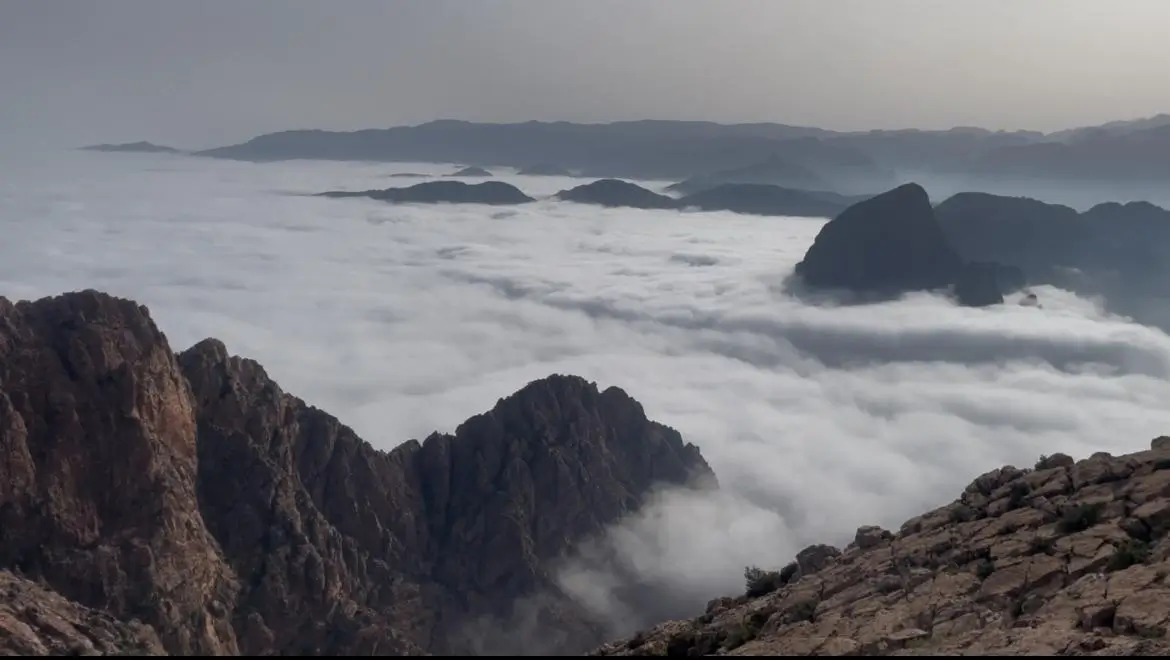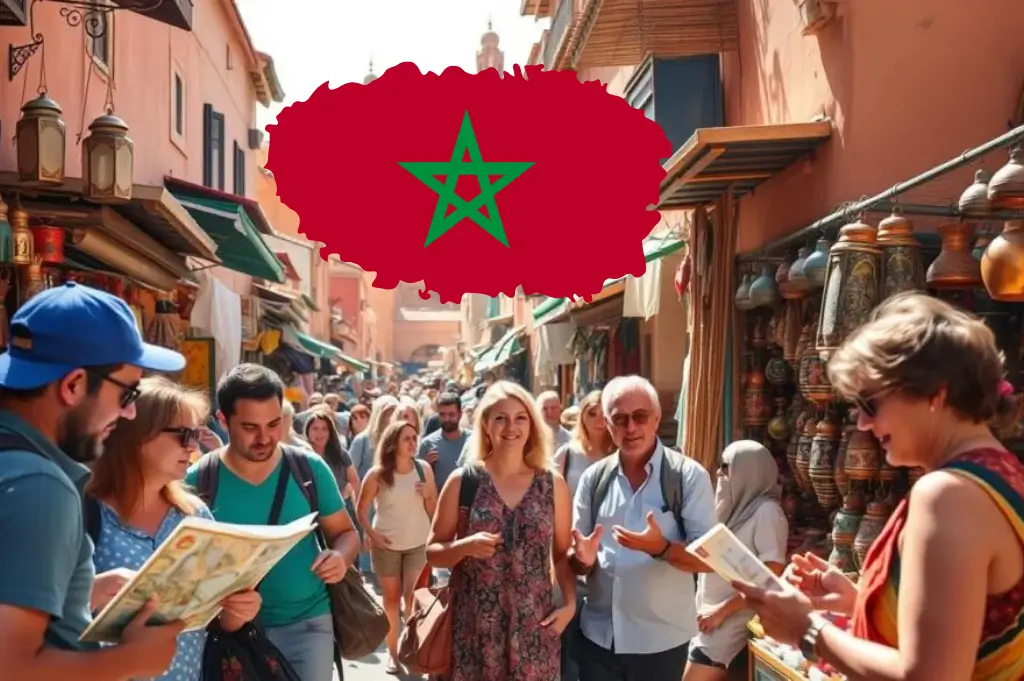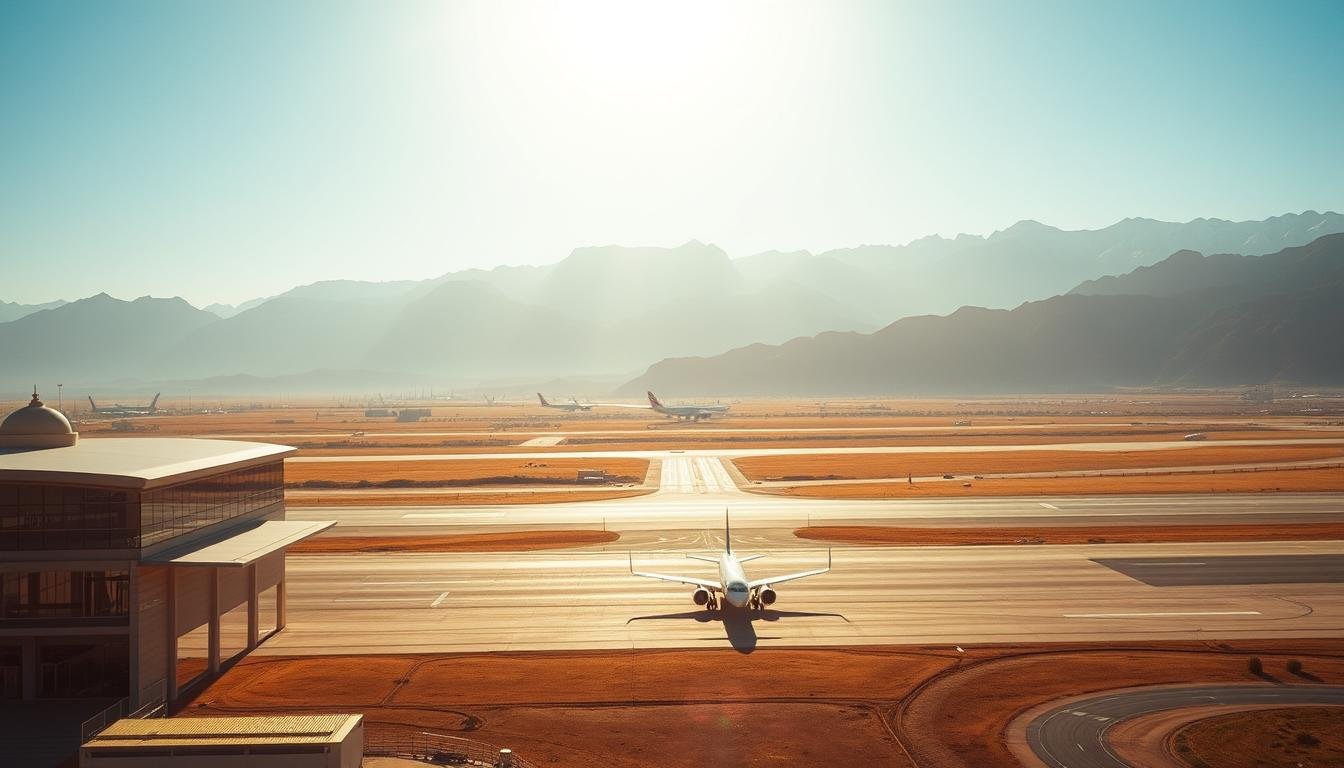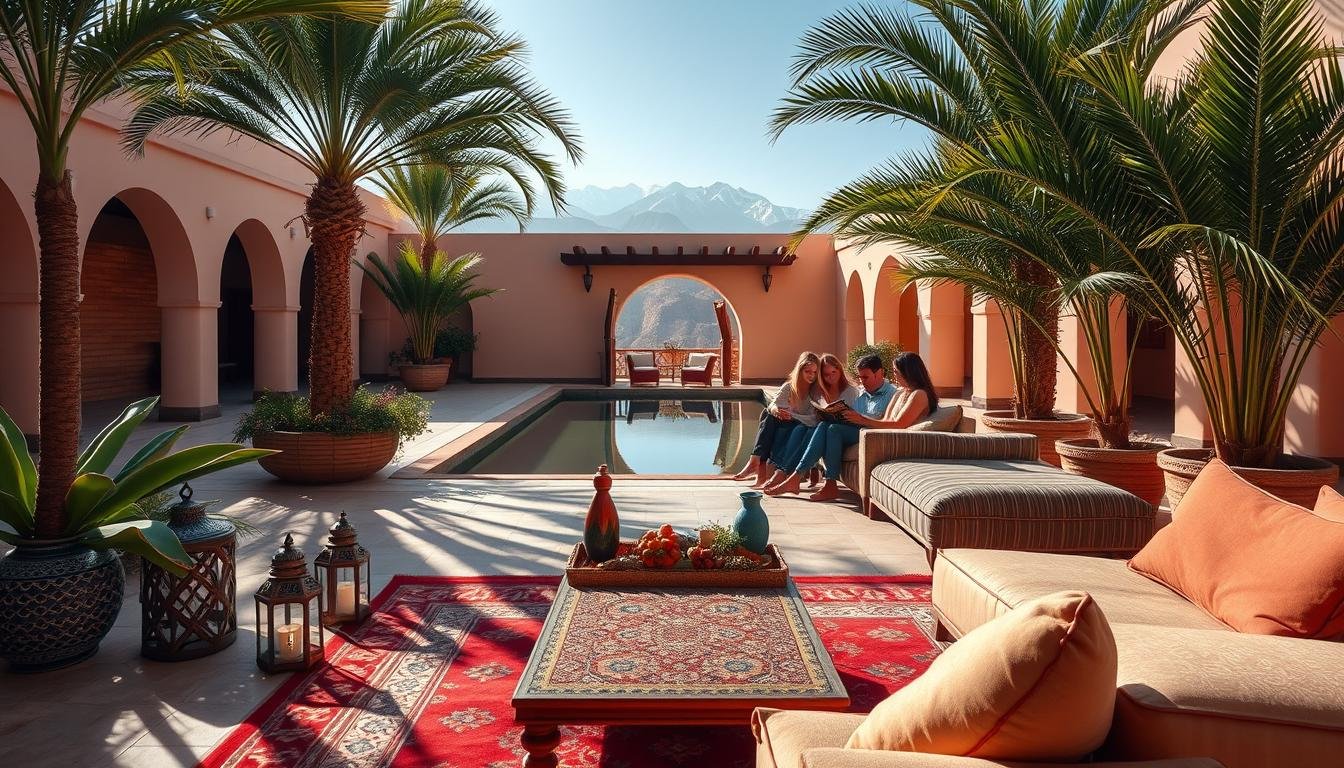Language in Morocco: A Complete Guide to Morocco’s Multilingual Tapestry
Welcome to Morocco’s Multilingual Tapestry
Stepping into Morocco is like entering a linguistic labyrinth where ancient tongues dance with modern dialects, and colonial legacies interweave with indigenous voices. The language in Morocco presents visitors with an unexpected journey that tests you emotionally, physically, and mentally due to its exceptional multilingualism and diversity. This isn’t merely about learning a few Arabic phrases from your guidebook – it’s about navigating one of the world’s most complex linguistic ecosystems.
While many travelers assume that what language is Morocco centered around is simply Arabic and French, the reality is far more fascinating. Morocco’s linguistic scene incorporates indigenous languages like Tamazight, emerging English influences, and unique local dialects that reflect centuries of cultural crossroads. Understanding what language in Morocco dominates daily life requires diving deep into historical, cultural, and ideological layers that shape how Moroccans communicate.
This comprehensive guide goes beyond basic travel phrases to explore the intricate web of languages in Morocco, providing essential insights for travelers, language learners, and anyone curious about this North African kingdom’s rich linguistic heritage.
Table of Contents
The Official Pillars: Standard Arabic and Tamazight
Standard Arabic (MSA): The Language of Sacred Tradition and Formality
Modern Standard Arabic holds prestigious status as one of Morocco’s two official languages, enshrined in the 2011 constitution. This formal variety of Arabic carries profound historical and religious significance, deeply associated with Classical Arabic, the Qur’an, classical poetry, and the Monarchy. Many Moroccans consider it the “sacred” language and the “language of God.”
The morocco official language serves specific domains within Moroccan society. You’ll encounter Standard Arabic in official documents, transportation announcements on trains and buses, government signs, news broadcasts, university lectures, political speeches, and literary works. It functions as the ‘High’ (H) variety in what linguists call diglossia – a prestigious form reserved for formal contexts while everyday speech relies on different varieties.
For visitors, understanding this hierarchy helps explain why the language morocco uses in official settings differs dramatically from street conversations. Standard Arabic requires formal education to master, making it accessible primarily to educated populations while remaining distant from daily communication patterns.
Tamazight (Berber): Reclaiming Indigenous Identity
Tamazight gained official recognition alongside Arabic in 2011, designated as the “common heritage of all Moroccans without exception.” This umbrella term encompasses significant regional varieties including Tarifit (northern regions), Central Atlas Tamazight, and Tashelhit (southern areas), spoken throughout North Africa with influences from Latin, French, Spanish, and Arabic.
The national language of morocco represents a fascinating orthographic evolution. Traditionally an oral language, Tamazight now uses Neo-Tifinagh script, introduced by IRCAM (Royal Institute of Amazigh Culture), despite some communities preferring Latin or Arabic scripts. This indigenous morocco language showcases growing institutional support through dedicated broadcasting, textbooks, and increasing media presence.
However, Tamazight faces vitality challenges despite official backing. Demographic studies reveal declining speaker proportions and intergenerational transmission difficulties in some regions like the Rif, highlighting the complex relationship between official recognition and linguistic survival in modern Morocco.
The Heartbeat of Communication: Moroccan Arabic (Darija)
Darija: The Unofficial Main Language
Despite lacking official literary status, Darija functions as one of Morocco’s two unofficial “main” languages, serving as the primary medium for everyday conversation. This vibrant dialect represents a linguistic crossroads, reflecting Morocco’s diverse history through significant borrowings from Spanish, French, Tamazight, and Modern Standard Arabic.
Understanding what language in morocco people actually speak daily requires recognizing Darija’s central role. It exhibits remarkable regional diversity, from urban mdini forms to rural ʻrubi variations, including distinctive dialects like Tangier’s Lahja Chamalia and Casablanca’s Casawiya. This regional richness means that the morroco language experience varies significantly depending on your travel destinations.
Darija operates as the ‘Low’ (L) variety in Morocco’s diglossic system, used informally among family, friends, and colleagues. While Standard Arabic maintains prestige in formal contexts, Darija carries the emotional weight of authentic Moroccan identity and intimate communication.
Language Ideologies: Orality, Intimacy, and Cultural Boundaries
Traditional attitudes toward Darija emphasize its oral nature, with strong resistance to written forms, particularly in Arabic script. Some Moroccans view it as “deviant” or “corrupt” Classical Arabic, reflecting complex ideological tensions about linguistic purity and authenticity.
The language morocco residents use for intimate conversations carries associations with orality, informality, and sometimes ‘hchuma’ (shame or taboo subjects). These cultural attitudes influence when and where Darija appears appropriate, creating invisible boundaries that visitors should understand and respect.
Global Connections: French and English
French: A Lingering Colonial Legacy
French maintains a powerful presence in Morocco due to colonial history, functioning as a second language for many Moroccans. The languages in morocco educational system emphasizes French instruction, while official documents, transportation announcements, signs, and daily communication frequently incorporate French elements.
French dominance persists in crucial sectors including business, administration, diplomacy, and higher education. This colonial language morocco inherited has deeply penetrated Moroccan Arabic, influencing vocabulary and phonetics in ways that surprise first-time visitors expecting purely Arabic communication.
English: The Language of the Future?
English emerges as Morocco’s “language of opportunity,” particularly in larger cities, driven by media exposure, economic incentives, and globalization pressures. Unlike French and Spanish, English carries no colonial baggage, positioning it as a “global language” for accessing international opportunities.
Tourism and academic sectors showcase English’s growing relevance. Many staff in museums, hotels, and restaurants demonstrate good English proficiency, while universities propose replacing French with English for scientific and technical instruction. This shift represents a fascinating evolution in morocco language preferences among younger generations.
Darija’s Modern Manifestations: New Domains and Debates
The Rise of Written Darija: Challenging the Status Quo
Despite traditional resistance, Darija increasingly appears in written contexts, challenging conventional language ideologies. SMS texting using Roman script (Arabizi) has become a prominent domain where written Darija thrives, perceived as “more like speech” and creating an “unmarked” preference for informal communication.
Public advertising campaigns, like Inwi’s billboard strategy, utilize Moroccan Arabic in Arabic script to convey images of being “audacious, close, and simple.” While expanding Darija’s public role, these campaigns often reinforce oral/written hierarchies through “fractal recursivity” – framing written Darija as representing “oral language.”
Dubbed television series and journalism experiments, like Nichane Magazine’s bilingual approach, contribute to Darija formalization while navigating cultural sensitivities around traditionally taboo topics.
The “Darija Debate”: Institutionalization and Identity
A significant public debate emerged in 2013 regarding proposals to make Moroccan Arabic a language of instruction in early primary education. Proponents argued this would ease learning transitions and bridge cognitive gaps between home languages and school instruction.
Opposition centered on fears about threatening Standard Arabic, Morocco’s religious heritage, national identity, and limiting future generations’ opportunities. Social media platforms became battlegrounds where linguistic ideologies were negotiated, with language choices in comments indexing writers’ ideological positions.
Navigating the Moroccan Language Landscape: Practical Tips
Learning Darija Effectively
Start with practical resources like “Speak as they speak Darija” from Atayna for essential phrases and vocabulary. YouTube channels including Painless Arabic, Learn Darija with Kawtar, and Hassan Mohsine provide grammar instruction and contextual understanding. Websites like Five Colleges’ LangMedia offer videos with transcripts, while dictionary apps like ferhana.de provide audio recordings.
Immersive practice through Darija cooking videos and vlogs helps train your ear for regional accents. Remember that Darija’s richness comes from diverse influences including Tamazight, so embrace variation rather than seeking a single “correct” form.
Communication Strategies for Travelers
Moroccans genuinely appreciate visitors attempting local languages, even basic phrases. English speakers are readily available in larger cities, particularly in tourist-oriented businesses. Medina merchants often know sufficient English for attention and negotiation purposes.
Technology assists communication challenges – purchase an inexpensive Moroccan SIM card for translation apps like Google Translate, especially helpful for reading menus. Remember that language intertwines with culture, so approach communication with respect and grace as a guest in this linguistically rich nation.
Conclusion: The Evolving Future of Moroccan Languages
Morocco’s linguistic landscape represents a vibrant testament to its history, culture, and ongoing evolution, characterized by constant interplay between official languages, widely spoken dialects, and foreign influences. While strong commitment to diglossia persists, separating Standard Arabic and Darija domains, increasing written Darija presence in modern media subtly challenges established norms.
Public debates about Darija’s educational role highlight deep-seated anxieties and aspirations, while social media platforms become crucial discussion sites allowing creative linguistic expression that both reinforces and undermines traditional hierarchies.
Understanding what language is morocco truly about requires recognizing this complexity. The country’s multilingual reality offers visitors unique opportunities to witness living language evolution, where ancient traditions meet modern innovations in fascinating ways.
Your linguistic adventure in Morocco awaits – approach its languages with curiosity and openness to connect more deeply with its people and vibrant culture. Whether you’re mastering basic Darija phrases, appreciating Tamazight’s indigenous heritage, or navigating French colonial influences, each linguistic encounter enriches your Moroccan experience and provides windows into one of the world’s most fascinating cultural crossroads.

